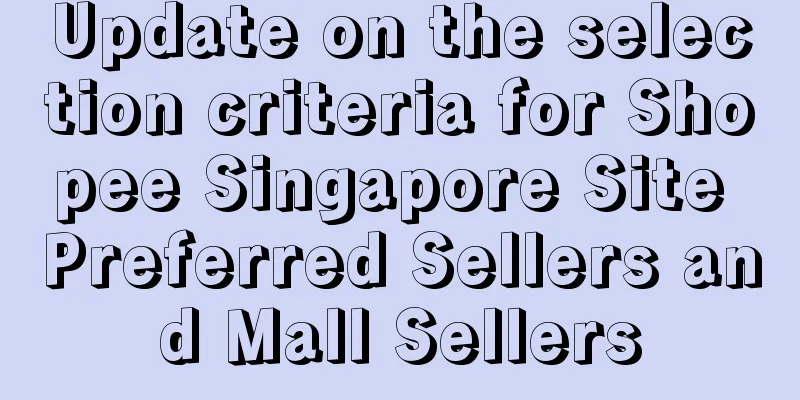Three-piece set to stimulate demand: content, scenarios, and KOLs

1. It’s not about selling products, it’s about stimulating demandWhat do you think of when you see the picture below? From left to right, there are 6 product forms, representing 6 ways to meet the same demand:
Yes, it’s not about selling beer, but understanding the demand itself Demand is conceptual and abstract, while products are concrete and multi-dimensional. Marketing is not about selling products first, but about stimulating demand—making it clear that consumers are not satisfied. Example: How to sell a strong liquor? Background information: This is a two-generation liquor factory, which is well-known locally for producing high-proof liquor with an alcohol content of 68°-72°. Demand analysis: clarify the target group and complete the consumer self-portrait. Is it to let more and more people who drink low-alcohol drinks drink strong alcohol, or to find more people who drink strong alcohol.
It sounds like a good idea to let people who drink low-alcohol drinks try strong alcohol. That is, to promote behavior by changing cognition, which obviously requires more extensive resources, more authoritative media, more funds, and even longer waiting time. However, many times we cannot afford to wait, essentially because we cannot afford to invest. Knowing yourself and knowing your enemy is the key. Being rich and powerful sounds particularly overbearing and reasonable. As a regional winery, this is obviously not what he should do now. Where do your customers come from? The most efficient way is to come from the existing crowd, and the most efficient way is to come from competitors. Does Pepsi need to rediscover a group of people who drink cola? No, what Pepsi needs to do is to make people who drink Coca-Cola drink Pepsi. Finding more people who drink strong liquor is the first step. The direction is determined, and the next step is to answer questions 2-6. The core is to complete the consumer self-portrait. Birds of a feather flock together. If you want to attract someone, you have to redefine the group characteristics. Once at a food stall, a friend said: "Look at Lao Gao, typical hardcore drinking buddies, old guns, this is down-to-earth, isn't it? Watching them drink is enjoyable." At the table next to me, there were three old men who looked to be in their 50s, drinking with relish. Yes! Just these two words: enjoyable. Heavy consumption is all about enjoyment! Spicy and numb, when you are addicted, your needs are released and satisfied. With the word "enjoyment", you will be able to move forward unstoppably and get better and better.
The state of being satisfied is satisfying, and the state of not being satisfied is unsatisfying. The state of consumers not being satisfied is unsatisfying. There is always a feeling that something is missing, a need that is in mind but not in words. In life, it manifests as inconvenience and fear of trouble - we must have a deep understanding of this kind of needs. 2. How to describe requirementsEveryone must know the story of selling shoes on a deserted island. Faced with the same situation, two people came to completely different judgments - different judgments on demand led to different views of the market. Because no shoes are worn, there is no demand; because no shoes are worn, there is a possibility of developing demand. The conclusion of A is that there is no demand, and the conclusion of B is that there is potential demand. (Eight demand states: negative demand, no demand, potential demand, declining demand, irregular demand, sufficient demand, excessive demand, and harmful demand). By using the promotion method of trying on clothes, we completed the demand survey (with good feedback), found opinion leaders (chiefs) to guide the demand through questions, and transformed the original potential demand into actual demand - A did the sales work and B did the marketing work. For enterprises, the first task is to complete a clear and understandable description of requirements. And based on this demand (one center), we organize internal and external resources of the enterprise to complete the implementation of the four basic points (product development, pricing, channel policy, and promotion strategy). That is: one center (demand) four basic points (product, price, channel, promotion). How to correctly describe demand? The description of demand is the description of the target market. The description of demand should be able to guide the work of product, price, channel and promotion. If we use OKR to understand, demand is O, and product, price, channel and promotion are KR. Description-1: We want to enter the mid-to-high-end women's clothing market. Can such a demand description guide the work of product, price, channel, and promotion? Product: women's clothing, price: mid-to-high-end, channel, unclear, promotion, unclear. Such a demand description is obviously unqualified. Because this O cannot be decomposed into KR, a center, and cannot guide the four basic points. To this end, to judge whether a marketing department has clearly described its needs, we only need to determine whether its description of needs can guide the improvement of products, prices, channels, and promotions. Demand description paradigm: what kind of product functions and forms can meet the needs of consumers in what specific scenarios. This provides key judgment basis for market research, product development, pricing, channels, and promotion. Description-2: It meets the dress requirements of working women for formal occasions such as attending meetings, giving speeches, signing contracts, etc. After listening to such a description, the basic research objects and demand scenarios are clear, and then market research can be carried out. This includes: purchasing budget, existing demand satisfaction methods, competitive product conditions, pain point analysis, etc. The work of the entire marketing department revolves around demand self-portraits, which in turn provide the original basis for future judgment and decision-making.
3. Three-piece set to stimulate demand: content, scenarios, and KOLs1. ContentWhat is content? It is pictures and texts organized around the selling points of the product. For example, in the context of all milk brands working on natural pastures, adopting a cow starts with the cow, and the selling points are based on what kind of cow and what kind of milk it produces, and the selling points are highlighted by content around the cow's diet and daily life. for example:
2. ScenarioScene: A collection of people, time, place, and events. For example, being sleepy or tired is a scene, being a little hungry or sleepy is also a scene, eating hot pot and being afraid of getting a sore throat is a scene, and giving gifts during the Chinese New Year is also a scene. Scenario: People's needs are naturally awakened at a specific time and place, resulting in consumption events. For example: moon cakes are indispensable on the 15th of August, rice dumplings are indispensable on the Dragon Boat Festival, lively gatherings with relatives and friends are indispensable on the Spring Festival, and people always stock up on things on Double 11.
For example, busy young people work during the day, have coffee to refresh themselves, and snacks to relieve stress. At night, there seems to be no third choice except bars, KTVs, and cinemas. Therefore, a new bar built for young people, Helen's Bistro, was born. Helen's Bistro has become the midnight Starbucks for young people. It is currently the largest bistro in China and a bar where one can consume without stress. Young people nowadays always have indescribable pressure and need a pressure-free space to soothe their emotions. Helens provides a differentiated choice for young people in terms of cost-effectiveness and environment. 3. KOLKOL: Nowadays, a brand that doesn’t know how to promote products has no chance of being promoted. KOLs are trusted agents of new brands, active media players, and the shortest distance between consumers and brands. New consumer brands that can quickly become popular have undoubtedly found KOLs that match them. The logic behind choosing KOLs is the logic of brands sending signals to potential consumers. The signal source must be strong, the signal coverage must be large, and the signal must not be interrupted. The signal source must be strong: The KOL itself must have strong influence. A KOL with 1 million followers is different from a KOL with 100,000 followers; a vertical KOL is different from a non-vertical KOL. When choosing, you should first choose vertical and then general vertical. The more vertical the information source, the stronger it is. For example, Xiaoxiandun chose Zhang Yuqi, Zhang Ziyi, Jing Tian and other celebrities who are labeled as "lady" and "exquisite". While bringing high exposure to the brand, it also subtly established the credibility of Xiaoxiandun among potential consumers. Signal coverage should be large: Coverage is a measure of magnitude, and large coverage means trying to increase the magnitude as much as possible. This magnitude is best to be a phased magnitude under the same keyword. For example, Perfect Diary has achieved the ultimate in coverage. At most, I received 10 advertisements in a month, 4 of which were from Perfect Diary. "Cooperating with Perfect Diary is quick and easy. They pay directly without saying anything, which is very worry-free - said a Xiaohongshu blogger. In the early days, Perfect Diary put all its resources into Xiaohongshu. It built a pyramid-like layout: including top and mid-level influencers, as well as passers-by and ordinary people for large-scale advertising (top influencers for product endorsement, mid-level influencers for large-scale promotion, and passers-by and ordinary people for customer testimony). The lower the frequency of advertising, the more budget there is. The signal cannot be interrupted: the essence of long-termism is not to cross the big cycle, but to continuously penetrate the small cycle; it is an ability and action to cross the small cycle and see through the big cycle. Each small "peak" represents the new consumer brand that continuously transmits signals to consumers, traversing from products, brands, competing products, categories, cross-categories, and scenarios, and finally establishes a unique brand mindset. For example, the mature brand Feihe milk powder has long been conveying a core concept that it is more suitable for the physique of Chinese babies. Of course, this statement does not stand up to thought. Does it mean that foreign milk powder is not suitable for the physique of Chinese babies? Obviously, this is not the case. However, cognition is greater than facts, and signals cannot be interrupted. Repetition can establish cognition and then influence cognition. Author: Houshankeju WeChat Official Account: Laogao Business and Brand |
<<: We studied 10+ brand cases and found the three keys to brand growth "sense of security"
>>: 99 yuan for 4 T-shirts, they sell out every year!
Recommend
How should I choose products when I first start selling them on Amazon?
It is easy to register an Amazon store, but it is ...
Taking over from Zhang Xiaohui, vertical buyers take up the banner of Xiaohongshu e-commerce
This article deeply analyzes the rise of vertical ...
When You're Old: For those over 40 who are still looking for a job
Note: The author of this article is an old friend ...
Is it possible not to participate in Amazon video verification? What are the requirements for opening a store?
On Amazon, you can do video verification. After do...
How many steps are needed to build a user search index system?
In daily life, search is one of the functions that...
B Station "Creates" Hupu Goddess
This article starts with the voting for the Hupu G...
Can Amazon individual sellers send FBA products? What should I pay attention to?
There are many people doing cross-border e-commerc...
8 methodologies you must know to do Xiaohongshu, super easy
How to create good content on Xiaohongshu? How to ...
Three revelations from Apple's premiere
This article describes the author’s motivation for...
What impact does the Amazon Advertising Archive have and why?
When opening a store and placing advertisements on...
Growing pains: When podcasts meet Xiaohongshu
This article mainly discusses how Xiaohongshu attr...
Can I apply for early payment from Amazon? How long does it usually take to get the payment back?
Just like the rules of Taobao platform, the money ...
The most searched product, which is flooding the Moments, is the "Sauce Flavor Latte" jointly launched by Luckin Coffee and Moutai.
Have you seen Moutai Latte on your WeChat Moments ...
Brand No. 1: Wangshanzha made 700 million yuan by doing these 3 things right
The Hope Water brand is based on the principle of ...
How to activate Wish? What are the conditions?
With the rise of cross-border e-commerce, more and...









